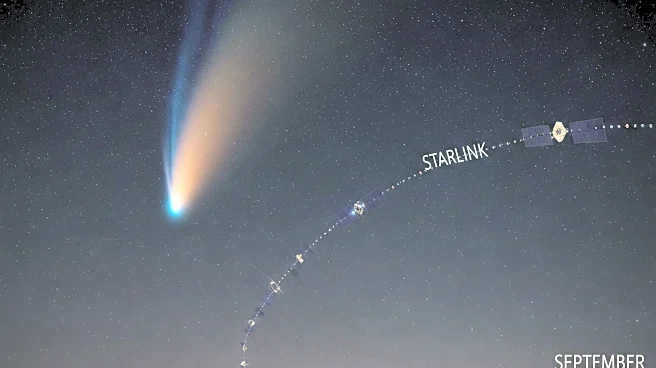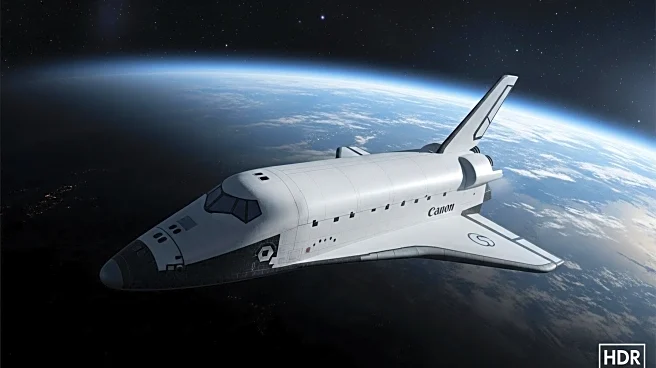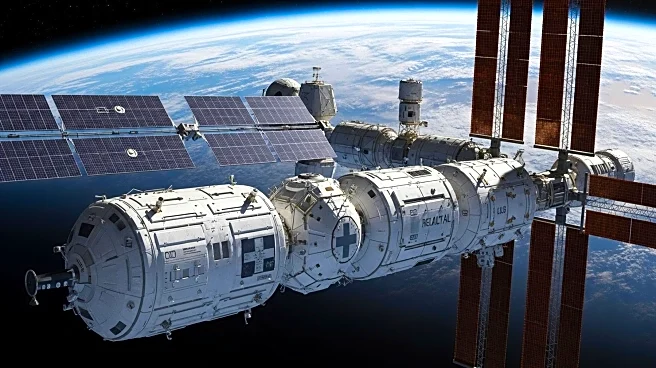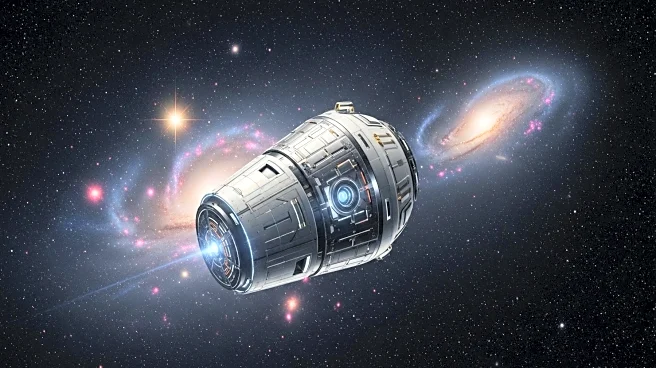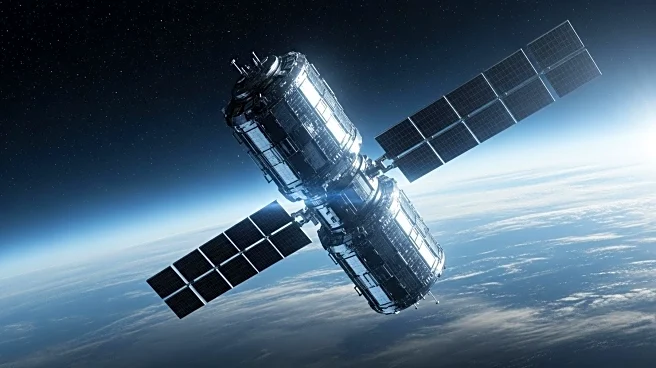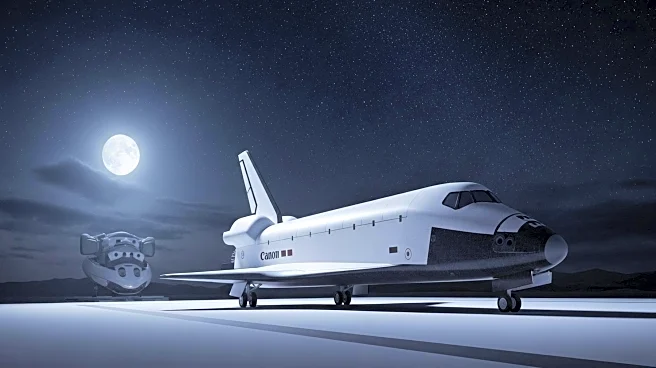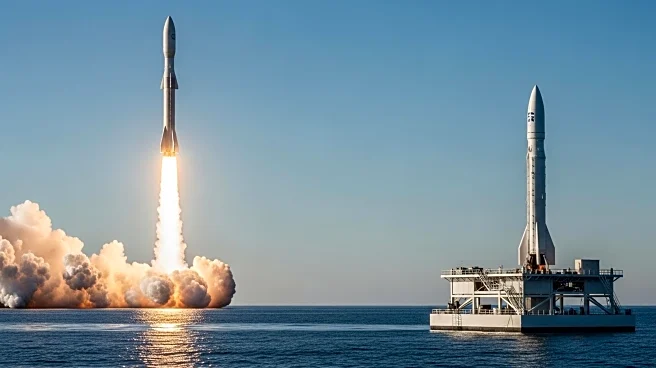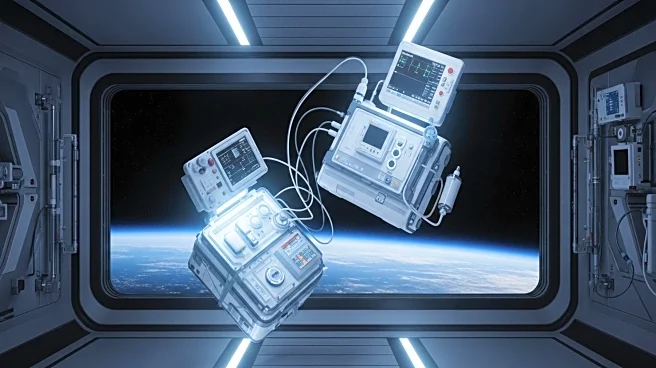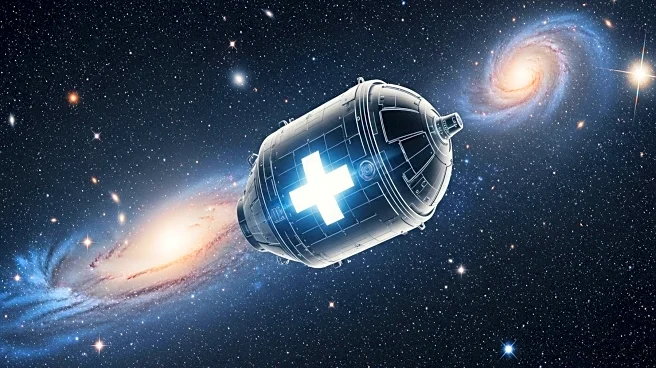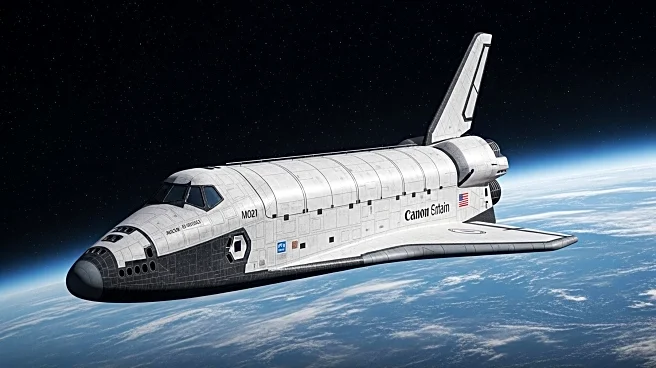What is the story about?
What's Happening?
Astronomy enthusiasts are in for a treat as several celestial events are set to occur on September 28-29, 2025. A new comet, C/2025 R2 (SWAN), is becoming visible in the western sky after sunset. Described as a 'once-in-a-lifetime visitor,' the comet is faint but can be spotted with binoculars. Additionally, SpaceX plans to launch 24 new Starlink satellites on September 28, which will be visible as a 'train' of lights crossing the sky in the days following the launch. The International Space Station (ISS) will also make visible passes around twilight, adding to the celestial showcase. Meanwhile, the Southern Taurids meteor shower is active, though it is expected to produce only about three meteors per hour.
Why It's Important?
These astronomical events offer a unique opportunity for stargazers and the general public to engage with the night sky. The visibility of Comet C/2025 R2 (SWAN) provides a rare chance to observe a long-period comet, which could inspire interest in astronomy and science. The Starlink satellite launch is significant for its contribution to global internet coverage, as SpaceX continues to expand its broadband constellation. The visibility of the ISS and the meteor showers further enrich the experience for skywatchers, potentially boosting public interest in space exploration and science education.
What's Next?
Following the Starlink launch, observers can expect to see the satellite 'train' in the sky, particularly in the days immediately after the launch. The comet will remain visible through early October, offering more opportunities for observation. The Southern Taurids meteor shower will continue to be active until November 12, with its peak expected on October 23. As these events unfold, they may prompt increased public engagement with astronomy and space-related activities.
Beyond the Headlines
The visibility of these celestial events highlights the importance of dark sky preservation, as light pollution can significantly hinder the ability to observe such phenomena. This could lead to increased advocacy for policies that protect night skies from excessive artificial lighting. Additionally, the expansion of the Starlink constellation raises discussions about the impact of satellite megaconstellations on astronomical observations and the night sky's natural beauty.
AI Generated Content
Do you find this article useful?
